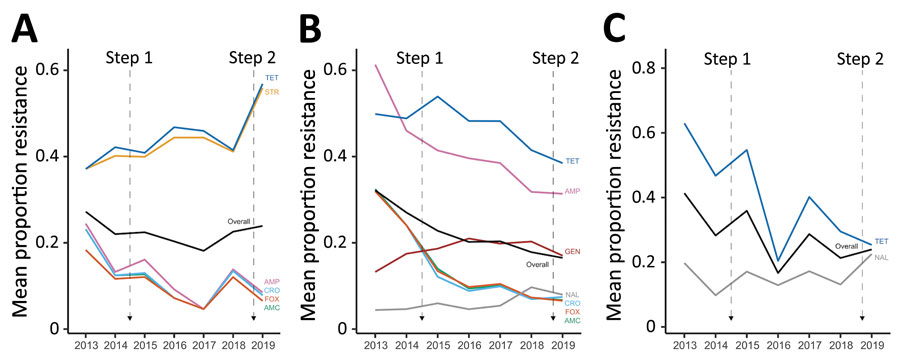Volume 27, Number 9—September 2021
Research
Reduction in Antimicrobial Use and Resistance to Salmonella, Campylobacter, and Escherichia coli in Broiler Chickens, Canada, 2013–2019
Figure 2

Figure 2. Significant changes (p<0.05) in mean proportion of antimicrobial resistance in Salmonella (A), Escherichia coli (B), and Campylobacter (C) in in broiler chickens, by antimicrobial class, Canada, 2013–2019. Step 1 is the elimination of the preventive use of category I antimicrobials in May 2014 (third-generation cephalosporins and fluoroquinolones) as part of Antimicrobial Use Reduction Strategy stewardship program. Step 2 is the elimination of the preventive use of category II antimicrobials in the end of 2018 (aminoglycosides, lincosamides, macrolides, penicillin, quinolones, streptomycin, and trimethoprim/sulfonamide combinations). Step 3, which was the elimination of the preventive use of category III antimicrobials (e.g., bacitracins and tetracyclines) by the end of 2020, is not represented in the figure. AMC, amoxicillin/clavulanic acid; AMP, ampicillin; CRO, ceftriaxone; FOX, cefoxitin; GEN, gentamycin; NAL, nalidixic acid; STR, streptomycin; TET, tetracycline.